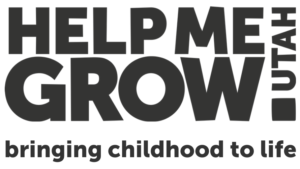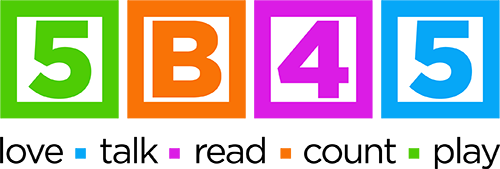Reading aloud to your baby or young child is a powerful way to build their brain and show your love. Reading introduces new ideas and builds language. You can spark their imagination as you explore new stories and pictures. You don’t have to stick to every word in every book. You can let your child handle and turn the pages or simply talk about what they see on the page. Reading time can become a special time that can help you and your baby calm down, grow together, and learn.
Let’s get reading
The Science
Reading builds connections
Reading to infants, toddlers, and children every day can be one of the best ways to build connections—in their brains and with you. Children hear words and see images they might not encounter every day, which builds their listening and speaking vocabulary. Research shows that stationary, two-dimensional images found in picture-books hit the sweet spot for children’s attention. New ideas and worlds can build their imagination. When you read about different people or characters and their challenges, your baby starts to learn empathy and problem-solving.
How do to it
A little every day goes a long way
Make books a normal part of your baby’s daily life. Your baby may not seem to understand everything at first, but that doesn’t mean their brains aren’t growing! Hearing your words, seeing the pictures, and starting to develop positive feelings about books will help them grow to love reading with you. Don’t feel pressure to read every word, finish every book, or hit a certain time limit—follow your child’s lead. Let them turn pages (even if they just turn a page back and forth). Point to pictures and talk about what’s seems to catch their interest. Even jump between books if that’s what your baby wants to do. It’s okay to keep it simple. A little time engaging with books goes a long way.
5b45 + Nutrition
Reading is Healthy
Reading to kids is great for growing brains, so do two things at once by reading books about health! Check out this list of great books to check out for more ideas.
Recipe Hunt—When cooking from a recipe, help your child “help you” find measurements and amounts. Then have them help you put it all together.
Food label puzzles—Cut the labels to your favorite snacks and foods into several smaller pieces, then help put it back together! This activity introduces kids to food labels and helps them think about comparisons and contrasts later in life.
Suggested Age Range: 0-1
Vroom Tip #82
Sharing the Story
When you’re reading something yourself or with your child, let him/her explore it with all of his/her senses. Allow him/her to touch, pat, hold, and even taste (if it’s clean) what you’re reading. Describe his/her actions like, “You’re patting the picture of the kitty cat. Meow!”
Children learn through touching, feeling, and putting everything into their mouths. As you talk about his/her experiences, you help your child make connections between words, pictures, and objects. You not only share the story, you share your joy in reading with him/her.
Vroom Tip #82
Sharing the Story
When you’re reading with your child, let them explore it with all of their senses. Allow them to touch, pat, hold, and even taste (if it’s clean) what you’re reading. Describe their actions like, “You’re patting the picture of the bunny.”
Children learn through touching, feeling, and putting everything into their mouths. As you talk about their world and senses, you help connect words, pictures, and objects. Plus, you’re not only sharing the story, you’re sharing your joy of reading with them.
Vroom Tip #86
Picture This
Do you have some books or magazines around? Show your child the pictures. They will like clear simple pictures, especially of faces. Talk with them about what you see. How do they respond? Now talk about their response!
One of the best ways for your child to learn about language is by looking at things with you and hearing you talk about them. When you talk back and forth with them, commenting on their responses, you build their brain!
Suggested Age Range: 1-2
Vroom Tip #88
Sing Read Repeat
Your child enjoys listening to their favorite stories and songs over and over again. After singing or telling stories with them, ask if they want more. How do they respond? Do they nod or squirm away? Talk about their actions like, “You said yes!” or “You look like you’re all done.”
Children learn through repetition and shared back and forth conversations. Repeated storytelling and singing helps your child understand the meaning behind words and sets the stage for talking and eventually reading. They’re learning the basics of communication!
Vroom Tip #288
Making Marks
As your child explores writing or drawing, comment on what they’re doing, instead of how pretty it is or what it looks like, “You made a big red mark!” These types of comments draw their attention to the process of making marks and ask them to talk about their drawing.
When you let your child freely explore writing and drawing and praise their effort (not what it looks like), they feel supported to keep trying and learning. The more opportunities they have with mark making, the more confident they will be to try drawing and writing later.
Vroom Tip #877
Stories Come Alive
Stories and songs are always more fun when you become animated! Engage your child by encouraging them to make sounds and movements like the ones they hear in the story or song. Ask them things like, “What does the lion sound like?” or “Can you move like a fast car?”
When you make stories and songs fun, you encourage your child to be active in their learning. By using their whole body to tell a story, they’re learning through their senses and building strong connections between words and actions.
Suggested Age Range: 2-3
Vroom Tip #272
Shopping List Scribble
Writing a shopping list? Talk with your child about what you need. Read outloud what you write down: “Milk, eggs, cereal.” Invite them to “write” or draw on the list too and to tell you what they’re thinking about when they make those marks on the paper.
Your child is learning that the marks you both make on paper have meaning. Understanding that one thing stands for another is an important thinking skill in learning to write, read, and communicate.
Vroom Tip #930
It’s a Hat
Take a book, a magazine, or a piece of paper, and put it on your head saying, “It’s a hat.” Then cover your face and say, “It’s a mask.” It can also become a shirt or shoes. Have your child take a turn pretending what this object can be.
When children pretend, they’re listening, looking, remembering, and controlling their behavior to fit the action. They’re also learning new words while practicing the idea that one thing can stand for something else, which will be important in reading and writing.
Vroom Tip #90
Picture Detective
Encourage your child to be a picture detective. Look at a picture in a book or magazine. It can even be in a newspaper or in an ad on a bus or train. Talk about the picture together. Can you find certain objects? Ask questions like, “Look at that boy’s face. How do you think he feels?”
Pictures help your child make connections and to understand that words have meaning. Having them look closely builds focus and self-control. The example here also helps them learn to recognize other people’s feelings.
Suggested Age Range: 3-4
Vroom Tip #27
Fill in the Blank
Fill in the blanks to make up a story: “We’re going to ___. When we get there we’ll see ___.” As your child gets in the rhythm, take turns going back and forth. Is your story realistic? Make believe? There is no right or wrong, just have fun!
Creating a fill-in-the-blanks story means your child is thinking and cannot go on automatic pilot. They have to shift their thinking to respond to an unpredictable and changing story line. Thinking in flexible ways encourages problem solving skills.
Vroom Tip #327
20 Questions
When you’re reading or telling a story to your child at bedtime, ask them questions about the story. Pause the story and ask: “What do you think will happen next? How do you think the character feels? What would you do if that happened to you?”
Asking questions (what, where, when, who, why) helps your child learn to focus and pay attention to the details of the story and use critical thinking skills. These questions also build their memory.
Vroom Tip #248
Letter Hunt
While you wait, invite your child to hunt for different letters in magazines, newspapers, and signs nearby. Can they find the letters in their name? What about a big letter “A” and a small letter “a?” Take turns naming and looking for letters. Have fun making the letter sounds together!
You’re helping your child learn about letters, how they sound, and how they’re used in familiar words as you play this game. You’re also making reading a part of your child’s everyday life. In addition, your child is learning a strategy for waiting that they can use later.
Suggested Age Range: 4-5
Vroom Tip #12
Letter Lookout
Pick a letter with your child and try to find it everywhere you go. Take turns calling it out when you see it. If they see an apple for the letter A, then you have to find something next. See how many things you can find. Four? Ten? More?
“I Spy” games like this one are great brain builders. They make your child aware of their environment and teach them to make connections between similar things. You can try this game with letters, colors, shapes— anything really!
Vroom Tip #214
Name Game
Have a little spare time or just hanging out? Flip through a book, magazine, or website with your child and take turns making up names for the people in pictures. Or use the people riding with you on the bus or in the park. Start naming people with A, then B. See how far you can work through the alphabet. Did you make it to the end and want a new challenge? Try going backward starting with Z!
Playing this game involves remembering, thinking creatively, and focus. These are all important skills for learning new things.
Vroom Tip #259
List Master
When you’re out running errands, put your child in charge of the list. Have them help list out a few things you both have to do that day. When you finish each task, cross it off the list together!
When you make a list and cross things off the list together, it helps your child learn that written words represent real-world activities.
Dig Deeper
Check on your child’s development!
Reading with your child not only supports development but builds a strong attachment and shared learning. Learn about this and milestones in your child’s development by completing a developmental screening from your doctor or child care provider or through Help Me Grow Utah.

Need more help?
Check out our community resources page.

